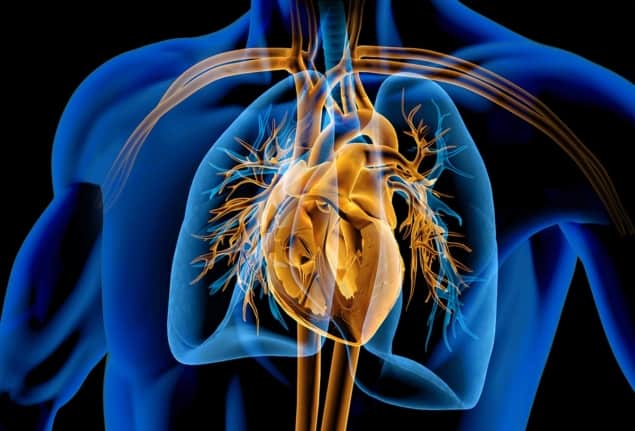
As treatments for oesophageal cancer improve, patients are living longer, especially those with early-stage localized disease. But longer survival puts oesophageal cancer patients at greater risk of developing serious radiation-induced late toxicities of the heart and lung.
The lack of predictive models, such as those developed for breast cancer patients, has hampered the design of clinically effective radiotherapy treatment plans that also reduce heart and lung toxicity. And because radiation dose to the heart is generally much higher when treating oesophageal cancer, breast cancer models are not automatically transferable.
Planning radiotherapy for oesophageal cancer is further complicated by the fact that reducing radiation dose to the heart increases the potential for lung toxicity. The optimal balance between cardiac and pulmonary toxicities and their influence on overall survival is unknown, according to researchers at the University Medical Center Groningen in the Netherlands and the Osaka Medical Center for Cancer and Cardiovascular Disease in Japan.
To evaluate which clinical and dosimetric parameters are associated with cardiac and/or pulmonary toxicities, the team conducted a retrospective study of 219 oesophageal cancer patients who received 3D conformal radiotherapy. Reporting their results in Radiotherapy and Oncology, the researchers determined that radiation dose to the lungs significantly impacted overall survival. Because of this outcome, they state that reducing cardiac dose at the expense of dose to the lungs “might not always be a good strategy,” especially when using intensity-modulated radiotherapy (IMRT) or volumetric-modulated arc therapy (VMAT).
The study cohort included patients with all stages of oesophageal cancer who underwent radiotherapy at the Osaka Medical Center between 2007 and 2013. Patients ranged in age from 40 to 88 years, were predominantly male (83%), smokers (86%) and drank alcohol (89%). Eighteen percent had a personal (12%) or family (6%) history of cardiovascular disease. Only 12% were diabetics and only 7% were overweight.
Patients were treated using 10 MV photons in 1.8–2.0 Gy daily fractions to a total dose of 50.4–66.0 Gy (median: 60 Gy). They had follow-up visits every three to six months for the first two years, and semi-annually thereafter. With a median follow-up of 27 months, 45% of patients had developed locoregional failures. The median disease-free survival was 64 months.
The researchers measured dose–volume parameters including dose to the whole heart, and substructures of the heart and lungs, and mean doses. They also recorded all newly diagnosed cardiac and pulmonary events. They reported that 28% of patients developed radiation-induced pneumonitis. The primary predictor of radiation pneumonitis was mean lung dose. The patients who developed radiation pneumonitis had significantly worse overall survival compared with other study participants.
Roughly one third of the patients developed pericardial effusion, the build-up of excess fluid in the pericardium that puts pressure on the heart and can lead to heart failure. However, this toxicity did not seem to influence overall survival in the patient cohort.
Multivariable analysis revealed that radiation dose to the lungs (V45, the volume of lung receiving over 45 Gy), but not the dose to the heart, influenced overall survival significantly in these patients. When the team repeated the analyses excluding patients with radiation pneumonitis, the same variables remained significant. In the patients with radiation pneumonitis, the most important predictor for overall survival was the radiation dose to the heart.
“Cardiac dose–volume parameters predicted the risk of pericardial effusion and pulmonary dose–volume parameters predicted the risk of radiation pneumonitis,” write the authors. “However, in this patient cohort, pulmonary DVH parameters (V45) were more important for overall survival than cardiac DVH parameters.”
Because worse overall survival can be caused by radiation dose to both organs-at-risk, the authors suggest that oesophageal cancer patients are treated with proton therapy, because it can reduce both the radiation dose to the heart and to the lungs. First author Jannet Beukema tells Physics World that the University Medical Center Groningen is now utilizing proton therapy for preoperative oesophageal cancer patients. They are currently conducting more research to determine heart and lung toxicity in this patient group.



